A Solstice Solar Eclipse Is About To Happen: Just How Rare Is It?

This year’s June solstice coincides with a new Moon and an annular solar eclipse. Here’s how rare it truly is.
As the Earth orbits the Sun, it rotates on its axis. At two points throughout the year, our 23.5 tilt points maximally either towards or away from the Sun, corresponding to the summer and winter solstices. As this annual dance occurs, however, the Moon continues to orbit the Earth, passing in-and-out of the Earth-Sun plane and displaying its phases, from new to full and back again with each lunar month.
On Saturday, June 20, 2020, the solstice will occur as the Earth’s north pole reaches its maximum tilt towards the Sun. Just 9 hours later, the Moon will pass perfectly between the Earth and the Sun, creating an annular solar eclipse for a myriad of observers across Africa and Asia. It’s an incredibly rare occurrence to have a solstice solar eclipse, but there’s a good reason for it this year. Here’s the scientific story of why.
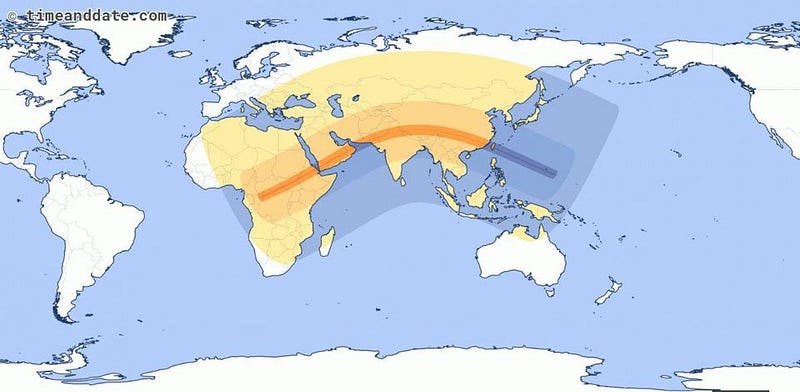
The solstices happen twice a year, and the Moon cycles through its full set of phases every 29.53 days. In order to get a solar eclipse, the Moon needs to be in its “new” phase: the phase that it only achieves when the Moon passes between the Earth and the Sun.
Getting a new Moon to coincide with the solstice isn’t so rare: about 3.4% of all solstices will have a new Moon occurring within 12 hours of that moment of maximal tilt. That’s true for any specific phase you care to examine.
3.4% of solstices will coincide with a first-quarter Moon.
3.4% of solstices will coincide with a full Moon.
3.4% of solstices will coincide with a last-quarter Moon.
And given that we have two solstices a year, this means that a whopping 13.5% of all years will either have a new Moon or a full Moon on one of the solstices.
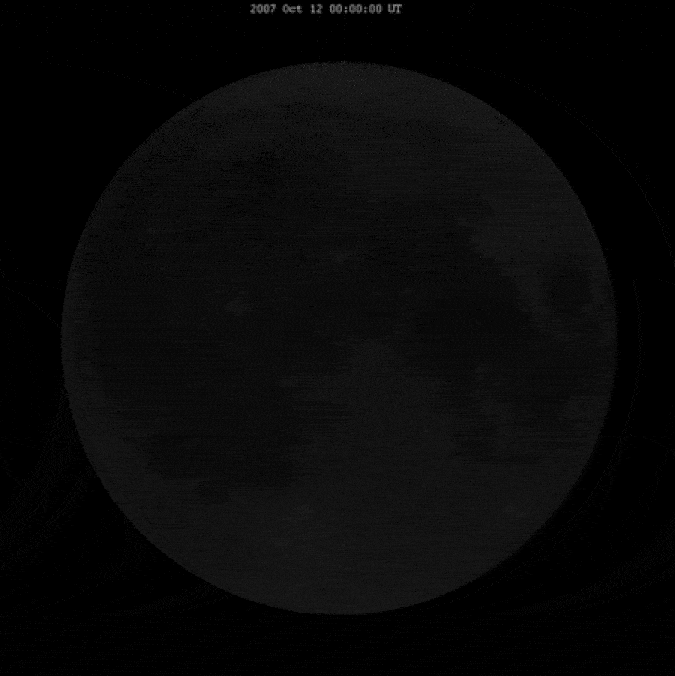
That’s pretty frequent! Either a new Moon or a full Moon will happen on the solstice about every 7-to-8 years. We just missed a full Moon on the solstice in December of 2018, when that moment of 100% fullness occurred a little less than 24 hours after the moment of maximal tilt with respect to the Sun.
Most recently, Earth experienced a full Moon occurring on the 2016 June solstice. Before that, Earth experienced a full Moon on the 2010 December solstice.
But for new Moons? We came close to having new Moons on the solstice in 2014 and 2006, but each time we were offset by approximately 24 hours instead of 12 hours. You have to go all the way back to 2001 to find a new Moon that coincided with the solstice, which it did on June 21 of that year.
And quite remarkably, that solstice new Moon in 2001 also corresponded to a total solar eclipse.

That’s a remarkable feat, and something that might come as a surprise. The solar eclipse occurring on the June solstice of this year, 2020, occurs precisely 19 years after the last solar eclipse on a solstice: June 21, 2001.
You might wonder if there’s a pattern at play, so it might occur to you to go look forward and backward in time in 19 year jumps.
Sure enough, there was another solar eclipse on June 21, 1982. There will be another solar eclipse on June 21, 2039. And jumping ahead by another 19 years, there’s still another solstice solar eclipse in our future on June 21, 2058.
But this doesn’t match what you might naively expect. A solstice solar eclipse every 19 years is too good to be true; it’s something that we shouldn’t expect to see. Here’s why.

In order to have a solar eclipse, you don’t just need a new Moon; you need a new Moon to occur precisely when the Moon crosses the Earth-Sun plane. The Earth traces an elliptical path around the Sun, and the Moon makes an elliptical orbit around the Earth, but those two ellipses are tilted with respect to one another. It isn’t much of a tilt — just 5.2° — but the Sun and the Moon are small enough as seen from Earth that most new Moons don’t result in any sort of eclipse at all.
With the Sun and Moon each making a circle about 0.5° in diameter on the sky, only about one in five or six new Moons results in either a partial, annular, or total eclipse of the Sun. In the 20th century, for example, there were a total of 1,237 new Moons and a total of 228 solar eclipses: about 18% of all new Moons.
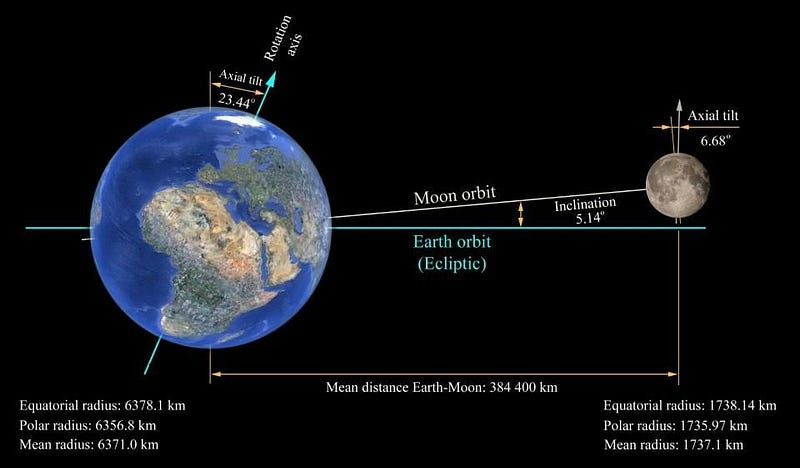
So what should this mean for solar eclipses on the solstice? If we take into account that:
- a new Moon occurs every 29.53 days,
- there are two solstices each year,
- 3.4% of all solstices will experience a new Moon,
- and that ~18% of all new Moons will result in a solar eclipse,
we can run the math and determine that, on average, a solar eclipse should occur on a solstice just once every 82 years.
So why, then, are we getting them once every 19 years? Why did we have one on the June solstice in 1982 and 2001; why are we having one in 2020; why will we have one in 2039 and again in 2058?
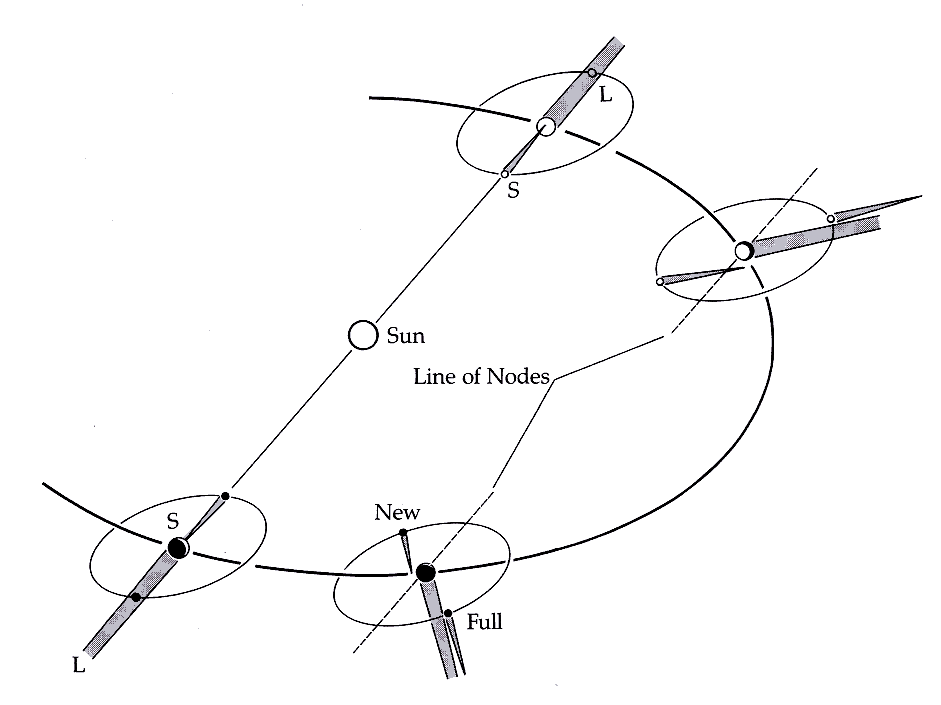
It’s because, like everything involving the motion of bodies in our Solar System, events like these come in cycles. This particular phenomenon of a 19 year eclipse cycle is known as a Metonic cycle, dating all the way back to Meton of Athens nearly 2500 years ago. For every 19 years that pass, almost exactly 235 lunar months (full cycles, from new Moon to new Moon) pass as well, meaning that eclipses recur in a 19 year periodic cycle.
Well, almost.
For every 19 years that pass, we experience almost 235 lunar months: we fall short by a mere 72 minutes. When we do get an eclipse on the solstice, we tend to get a number of them in a row with this 19 year period. But then, when enough of those “72 minutes” add up, they push us out of sync with the solstice once again.

We’re actually very lucky to be alive right now, when we’re experiencing a period where five solstice eclipses happen all in a row. There wasn’t one, however, on the June solstice in 1963. Nor will there be one on the June solstice in 2077. The eclipse cycles drift ever so slightly relative to our annual calendar over time, and this pulls events in and out of this 19 year pattern.
If you want to know when the last solstice solar eclipse was prior to 1982, you have to extrapolate all the way back to the December 22, 1870 total solar eclipse. If you want to know when the next one will be after the 2058 solstice solar eclipse, you need to jump forward all the way to the partial solar eclipse of December 22, 2242. There will be no solar eclipses on any solstice for almost 200 years once 2058 passes us by.

Why don’t the eclipses simply gradually shift, then? Why do they fall completely out of phase with our annual calendar?
It’s because the nodes of the Moon’s orbit — the places where the Moon crosses the Earth/Sun plane — occur with a slightly different frequency than the phases of the Moon. The Moon crosses through each node in its orbit with a frequency of 27.22 days, rather than the 29.53 days that the lunar phase cycle recurs on.
But here’s the kicker: when we extrapolate this all the way out to 19 year periods, both the lunar phase cycle and the node-crossing cycle almost perfectly align. 19 calendar years is the same as 235 lunar phase cycles (minus 72 minutes), but it’s also the same as 255 node-crossing cycles, which are known as draconic months. Only, the node-crossing cycles miss this 19 year periodicity by about 12 hours. On Earth, after 4 or 5 eclipse cycles, these cycles fall out of phase by enough that eclipses no longer recur at the same time of year.
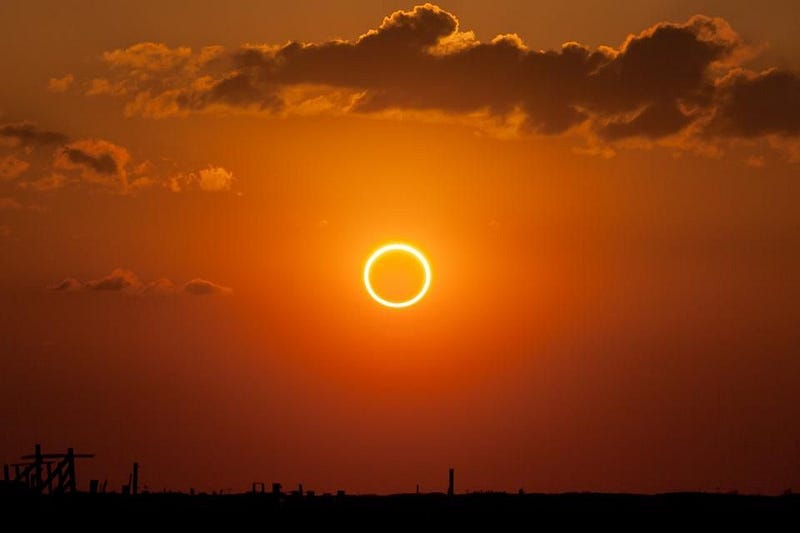
A solar eclipse occurring coincident with the solstice is a pretty rare event, but one that we’re fortunate enough to be experiencing quite regularly at the present. Over a very long timescale, we’ll only see one solstice solar eclipse every 82 years or so: not very good odds for a human. But because of how these events cluster together in 19 year intervals, we had one in 1982, 2001, are having one in 2020, and will have more in 2039 and 2058. All of these will occur on the June solstice.
And then, there will be an enormous drought. For 184 years after the 2058 event, planet Earth won’t experience another solstice solar eclipse. After an incredible drought, the December 22, 2242 solstice will finally see them return with a partial solar eclipse. There will be a cluster of a few in a row every 19 years after that, and then another drought until 2373, when a total solar eclipse occurs on the June solstice. Enjoy the 19-year return of June’s solstice solar eclipse while you can. Once 2058 passes us by, they won’t be back for nearly two full centuries.
Ethan Siegel is the author of Beyond the Galaxy and Treknology. You can pre-order his third book, currently in development: the Encyclopaedia Cosmologica.





